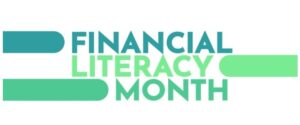With the high cost of living, peer pressure to spend money, and a non-stop bombardment of advertising on multiple platforms, it’s not surprising that many of us spend more than we intend to. You might find it challenging to make it to the end of the pay period with any money left over. If you feel like you should be able to save some money but don’t know where it all went at the end of the month, there is one temporary practice that may help bring awareness to your finances: the No-Spend Month.
What is a no-spend month?
A no-spend month is a 30-day challenge where you commit to avoiding all or some categories of discretionary spending. That doesn’t mean you don’t spend any money at all. Essential spending, such as grocery store trips, healthcare costs, housing, and bills, is still allowed. However, for the duration, deciding to spend money on extras like online shopping, dining out, or impulse purchases is off limits.
When money is tight, there are always two approaches to try to put a little extra in your budget. You could increase your income by pursuing a higher-paying job, asking for a raise, or picking up a side hustle. Or you can reduce your spending by utilizing a budget or considering a no-spend month, which may help you redirect extra money toward your emergency fund, savings account, or debt repayment. Undertaking a financial challenge can also help those who feel their finances have gotten out of control by increasing their overall financial awareness and improving their understanding of their spending habits.
A one-month timeframe is popular because it is manageable and achievable. Some people do less, while some try for more to challenge themselves. The book The Year of Less, by Canadian Cait Flanders, details one woman’s experiment to go a whole year without discretionary spending. You don’t have to commit to it that firmly to reap the benefits of this popular financial reset.
Different approaches to a no-spend month

How you craft your no-spend month is entirely up to you. There are no hard rules, only guidelines to help you choose the right approach. We spoke to Deidre Cross, budgeting content creator and founder of OHH YOU BUDGET. Cross has been participating in no-spend months for over 10 years and takes a flexible approach to the no-spend challenge.
“At first, it was about control. It gave me a month where I knew my expenses would be low, which meant I could put larger chunks of money toward debt. Once I became debt-free, I kept doing them because they helped me fast-track my savings goals. I’ve always thought of no-spend months as a nice reset after a season of active spending. This practice makes me grateful for what I already own and pushes me to get creative with what I have.”
Deidre also shared a couple of tips for making a no-spend month easier. She uses loyalty points accrued throughout the year. She also recommends getting comfortable telling others what you are doing. They’ll understand why you’re saying no, and may even join in with you.
The great thing about budgeting and participating in financial challenges is that you decide which approach works best. Check out each of these methods to select the right style of no-spend challenge for you.
Strict essentials-only
People who follow this format cut all discretionary spending and focus solely on basic needs. That means anything non-essential is off the table for the month. At the same time, things like rent, groceries, daycare, utilities and transportation are still allowed.
Category-specific
Those who find themselves overspending in certain areas may want to try this style. This version is when you temporarily ban yourself from just one or more categories, like online shopping or dining out.
Flexible or modified
Set rules on what you can and can’t spend on, as well as what counts as spending. For instance, you may consider allowing the use of gift cards or loyalty point programs to make it more sustainable.
Family or partner challenge
Participating in a no-spend challenge with others is a great way to increase its success. You can turn it into a household project. Plan free activities instead of spending money, and make it a group goal to achieve.
Pros and cons of a no-spend month
For some, a no-spend challenge may be a bit extreme, but for others, it helps ignite a focus on financial awareness and can kick-start savings! This approach may not be for everyone, but it can bring some clear wins as well as challenges. Here are a few of the benefits and drawbacks of undertaking a no-spend challenge.
Pros
- Quick Reset – Free up cash in your bank account almost instantly.
- Awareness – Understand where your spending money really goes.
- Build savings – Use your no-spend month to boost your savings account.
- Debt help – Make extra payments on a credit card balance.
- Mindset shift – Learn how to save money and enjoy free alternatives.
Cons
- Restrictive – It can feel restrictive if your financial goals aren’t clear.
- Temporary – The benefits could be temporary without long-term money-saving habits.
- Requires dedication – Peer pressure to spend, whether through social media or friends, can make it harder.
- Delayed spending – Risk of overspending later when you “reward” yourself for a job well done.
Who should try a no-spend month?
The challenge of a no-spend month might not appeal to all, but here are a few tips to know if it’s right for you:
Great for
- Canadians who feel like they don’t know where their money has gone at the end of the month.
- Those who spend money on takeout, subscriptions, or online shopping more than they would like.
- Families saving for travel, an emergency fund, a down payment or other financial goals.
- Those who want to accelerate debt payoff.
Who should avoid it
- People who are already living on essentials only (like rent, healthcare costs, and groceries).
- Those with unpredictable large expenses.
- Those who know they’ll end up on a spending spree after restriction, if that’s you, try a smaller challenge first.
No-spend month success tips
Before the challenge
Jumping in without a plan may lead to abandoning the challenge early. So, how can you prepare for a no-spend month? Deidre recommends starting small, “try a no-spend weekend or week before committing to a full month.” Here are some other tips that will help set you up for success.
- Know your ‘why’ – Making your goal clear and the underlying reasons behind it known can help you stick to the plan better.
- Set financial goals – Do you want to build an emergency fund or pay down a credit card?
- Define your needs vs wants – Essentials at the grocery store, utilities, bills, and transportation are needs, while shopping and dining out may be wants. Take a hard look at what you usually spend on and categorize each area as a need or a want.
- Stock up wisely – Be sure to get groceries, gas, and basics before the month begins.
- Plan free alternatives – Look for free community events, hikes, or library visits. There are lots of free activities happening in your community if you look for them!
- Track your progress – Use a budgeting app or spreadsheet for visibility and data retention. These tools can help you monitor your progress and track your successes.
During the challenge
Along with your preparation, there are some helpful tips experts agree on that can help you succeed and make it to the end without breaking your challenge rules.
- Define carefully what is allowed and what is not.
- Pick a month without significant events or holidays where costs can easily climb.
- Track every dollar in your bank account.
- Keep a “want list” for later.
- Use gift cards or loyalty points if you have them to avoid spending money.
- Share your goals and progress with your friends, family, or on social media to hold yourself accountable.
After the challenge
After your no-spend challenge, it is time to look back and review the results. Take a look at how this challenge impacted you. Did this challenge make you feel in control or deprived? How did you react when you were free to spend again? Did you want to spend more, as a reward, or did it help you feel more control of your spending after the challenge?
Reflect on whether you were able to save money. Integrate the money-saving tips that worked for you into your post-challenge financial practices. When the challenge is over, make sure to avoid splurges. Reward yourself mindfully and ease back into normal spending. If it worked for you, repeat the challenge in different categories if you found it helped you reach your goals.
Conclusion
A no-spend month can help you get your spending under control, build your emergency fund, and reach your financial goals. Cutting out online shopping or tackling all discretionary spending can be some ways to apply this challenge. A no-spend month will teach you how to manage money, balance needs vs wants, and develop lasting money-saving habits. Remember, this isn’t forever. A no-spend month is a short-term challenge designed to raise financial awareness.
The best time to start is now. Use this month to reset your budget and start saving for what matters most.





